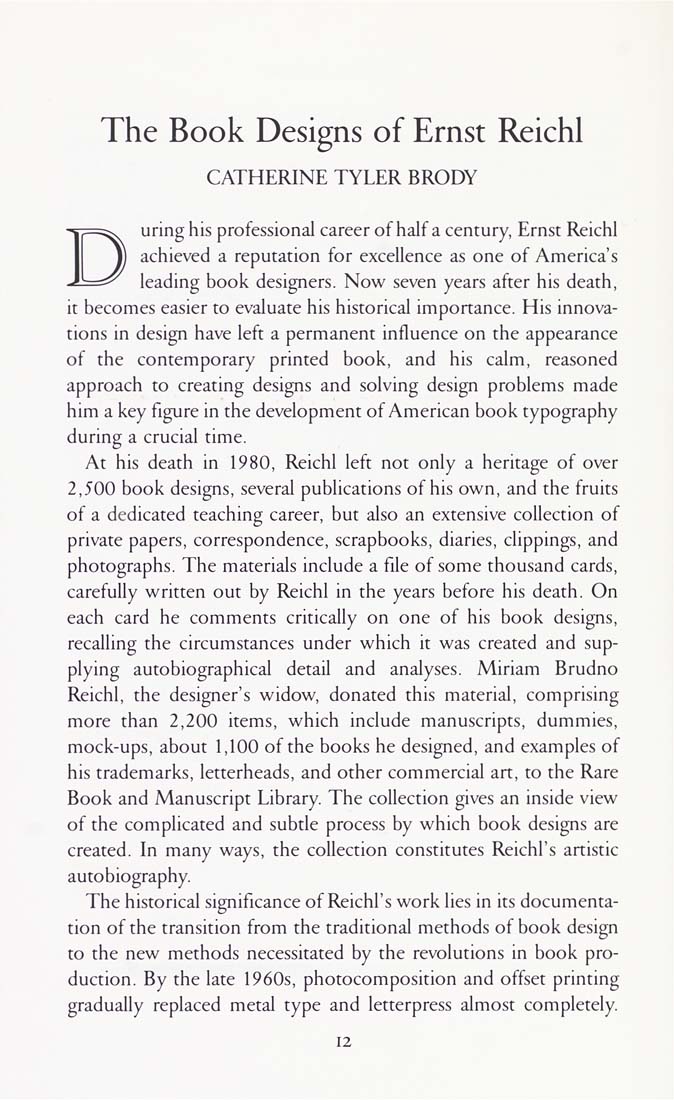Columbia Library columns (v.36(1986Nov-1987May))
(New York : Friends of the Columbia Libraries. )
|
||
|
|
|
|
| v.36,no.2(1987:Feb): Page 12 |

The Book Designs of Ernst ReichI CATHERINE TYLER BRODY During his professional career of half a century, Ernst ReichI achieved a reputation for excellence as one of America's leading book designers. Now seven years after his death, it becomes easier to evaluate his historical importance. His innova¬ tions in design have left a permanent influence on the appearance of the contemporary printed book, and his calm, reasoned approach to creating designs and solving design problems made him a key figure in the development of American book typography during a crucial time. At his death in 1980, ReichI left not only a heritage of over 2,500 book designs, several publications of his own, and the fruits of a dedicated teaching career, but also an extensive collection of private papers, correspondence, scrapbooks, diaries, clippings, and photographs. The materials include a file of some thousand cards, carefully written out by ReichI in the years before his death. On each card he comments critically on one of his book designs, recalling the circumstances under which it was created and sup¬ plying autobiographical detail and analyses. Miriam Brudno ReichI, the designer's widow, donated this material, comprising more than 2,200 items, which include manuscripts, dummies, mock-ups, about 1,100 ofthe books he designed, and examples of his trademarks, letterheads, and other commercial art, to the Rare Book and Manuscript Library. The collection gives an inside view of the complicated and subtle process by which book designs are created. In many ways, the collection constitutes Reichl's artfstic autobiography. The historical significance of Reichl's work lies in its documenta¬ tion of the transition from the traditional methods of book design to the new methods necessitated by the revolutions in book pro¬ duction. By the late 1960s, photocomposition and offset printing gradually replaced metal type and letterpress almost completely. |
| v.36,no.2(1987:Feb): Page 12 |







